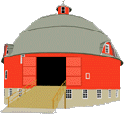SEGMENT: CHICKENS
Bert Aikman>UIS Collection A's>UIS Collection, Segment 9
| <-Previous Segment | Next Segment-> |
- CHICKENS
- Formation of bones in a hen determines how good an egg layer she will be. Built new building for hen-house. Describes hen-houses & where older hens & pullets resided. Began selling eggs to bakery in Springfield. Baker gave him a few cents more than market price because Bert picked his eggs daily rather than leaving eggs in nest as "decoys". Had 250 laying hens. Machine shed converted to henhouse. Got 2-3 cases of eggs a wk to take to Springfield. At first bought baby chicks, but then started buying pullets because of problems with brooder stoves & keeping chicks warm. Bought pullets who were pretty well "house-broke", from hatchery. Chicken had to be about 8 months old before they started laying pullet eggs. Pullet eggs were small, but tastier. By fall pullets became full-grown hens. After 2nd yr most hens were disposed of by selling them as meat. Raised Rhode Island Red & Barred Rock hybrid chickens, then raised White Rock. Mentions feed company in Quincy which produced chicken feed (as well as for other livestock). Mixed this feed with his corn & oats. This was balanced food for chickens. Mixing it was work. Discusses school-teacher who quit teaching & began grinding & mixing feed for farmers by traveling to farms. She did this until the grain elevators installed grinders for farmers. Farmers hauled their grain in, elevator folks would mix it & then grind it. Also ground up shells for chickens to eat. Did not raise a particular type of chicken because their cones would freeze easily at the good egg time of yr. Henhouses not heated, but water was kept from freezing. Eggs picked up about 4am. Discusses lights in henhouse & setting lights to wake them up at 4am to give them a 12hr day to lay eggs.

